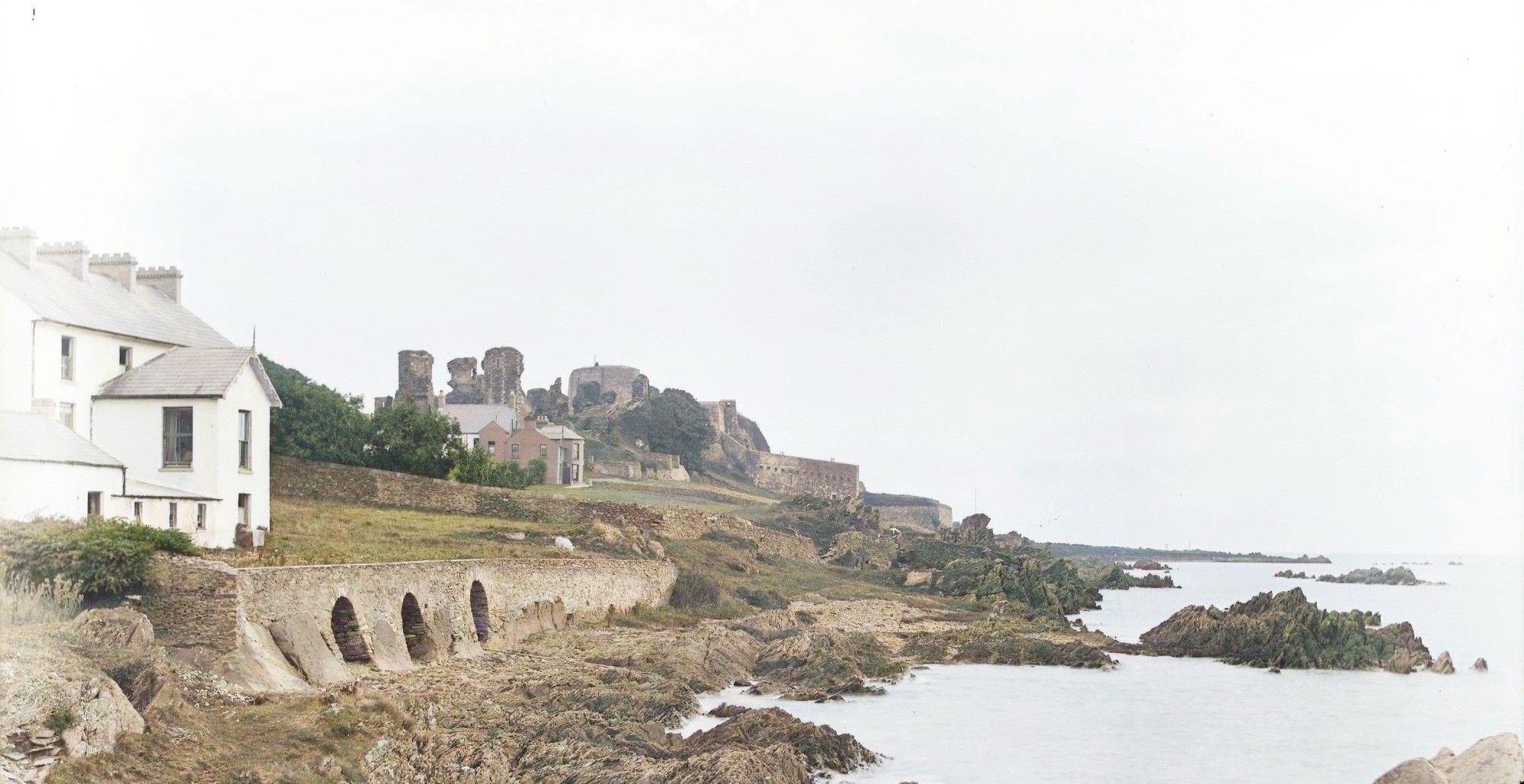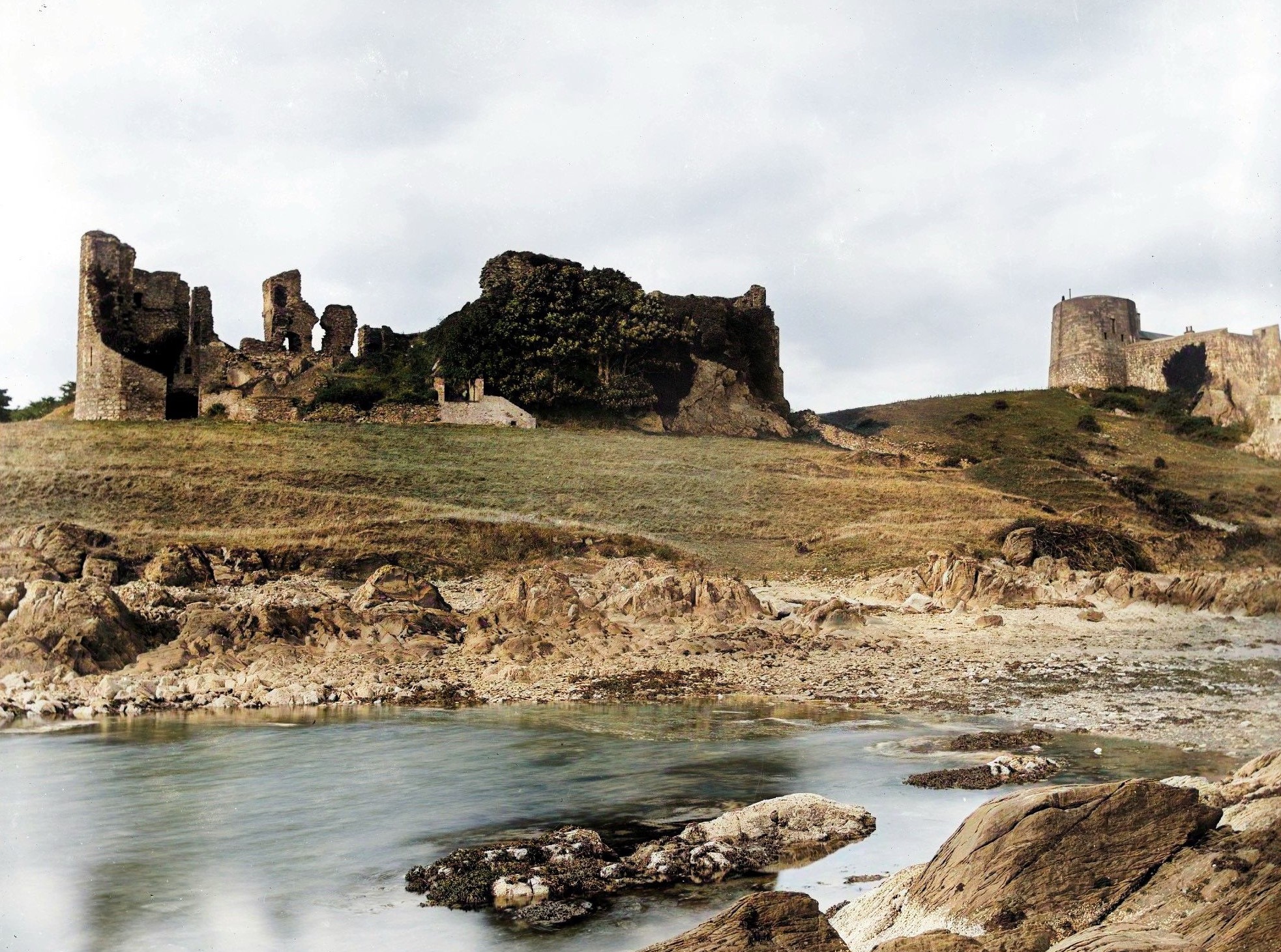Northburgh Castle, Greencastle, Co. Donegal
Standing on a rocky outcrop along the western shore of Lough Foyle, Greencastle was once the principal Norman stronghold in northwest Ulster.
Northburgh Castle, Greencastle, Co. Donegal
Perched on a rocky outcrop overlooking Lough Foyle, Greencastle stands as northwest Ulster’s most impressive Anglo-Norman fortress. Built between 1301 and 1305 by Richard Óg de Burgh, the ‘Red’ Earl of Ulster, this castle once commanded the western reaches of the medieval Earldom of Ulster.
Originally called Northburgh or Newcastle, the fortress was designed to control access to Lough Foyle and serve as a launching point for further territorial expansion. The Red Earl, who was close to England’s Edward I and knighted at Rhuddlan Castle, brought Welsh architectural influences to Ireland’s shores. The result was a sophisticated fortress that bears striking similarities to Edward’s great castles at Caernarfon and Harlech.
The castle’s designers made clever use of the natural landscape. Built on an exposed rock platform with cliffs and steep slopes providing natural defences, the fortress featured a three-storey gatehouse with twin polygonal towers—an architectural choice that signalled a shift from purely military structures to symbols of lordly power and administrative centres. The upper ward contained a massive polygonal tower at the northeast corner, whilst the great hall likely stretched along the northern curtain wall.
Northburgh’s history reads like a medieval thriller. During the Scottish invasion of 1316, Edward Bruce captured the fortress, holding it for two years until his defeat in 1318. The castle’s darkest chapter came in 1332 when William Donn de Burgh, the ‘Brown’ Earl, imprisoned his cousin Walter in the dungeons and starved him to death. This grim event is still commemorated in Derry City’s coat of arms, which features a skeleton. William’s sister was later found dead beneath the battlements, and following the Brown Earl’s murder in 1333, the de Burgh grip on Ulster collapsed entirely.
By the early 15th century, control had passed to the O’Donnells, with their dependants, the O’Dohertys, establishing themselves at the castle. They added their own architectural touches, including a square tower that still stands today. The fortress suffered significant damage during an O’Donnell family feud in 1555 when Calvagh O’Donnell brought cannon to bear against it, though it remained defensible into the late 16th century.
Archaeological excavations in 1996 revealed fascinating details about medieval life at Northburgh. Archaeologists uncovered cobbled surfaces that may have formed a formal approach to the gatehouse, and discovered a substantial medieval ditch—up to 8.4 metres wide—about 50 metres west of the castle. This ditch yielded locally produced pottery, tiles, and ironwork, offering tangible connections to the people who once lived and worked here.
Following the Plantation of Ulster, Lord Deputy Arthur Chichester attempted to restore the castle in 1611, employing a hundred men for twenty weeks just to clear the ruins. Though he maintained a small garrison there, and a 1623 report deemed it more defensible than nearby Culmore, Greencastle had begun its inevitable decline. By the late 17th century, the fortress was abandoned to the elements.
Today, the castle remains under the management of the Office of Public Works. Despite its ruined state, Northburgh Castle is recognised as one of the largest and most impressive buildings of its kind in Ireland, with both national and international significance. The Northburgh Castle Conservation Group, established in 2021, is working to preserve this remarkable monument for future generations.
Good to Know
The castle can be accessed from two points: directly from Greencastle village via the Stroove Road, or from a shore path that begins at the main village car park. There's convenient parking at the adjoining building with clear views of the ruins. The site is open to the public year-round, though paths can be uneven and slippery in wet weather. Entry is free, and the atmospheric ruins make for spectacular photography, particularly at sunset when the light catches the remaining towers against Lough Foyle.








